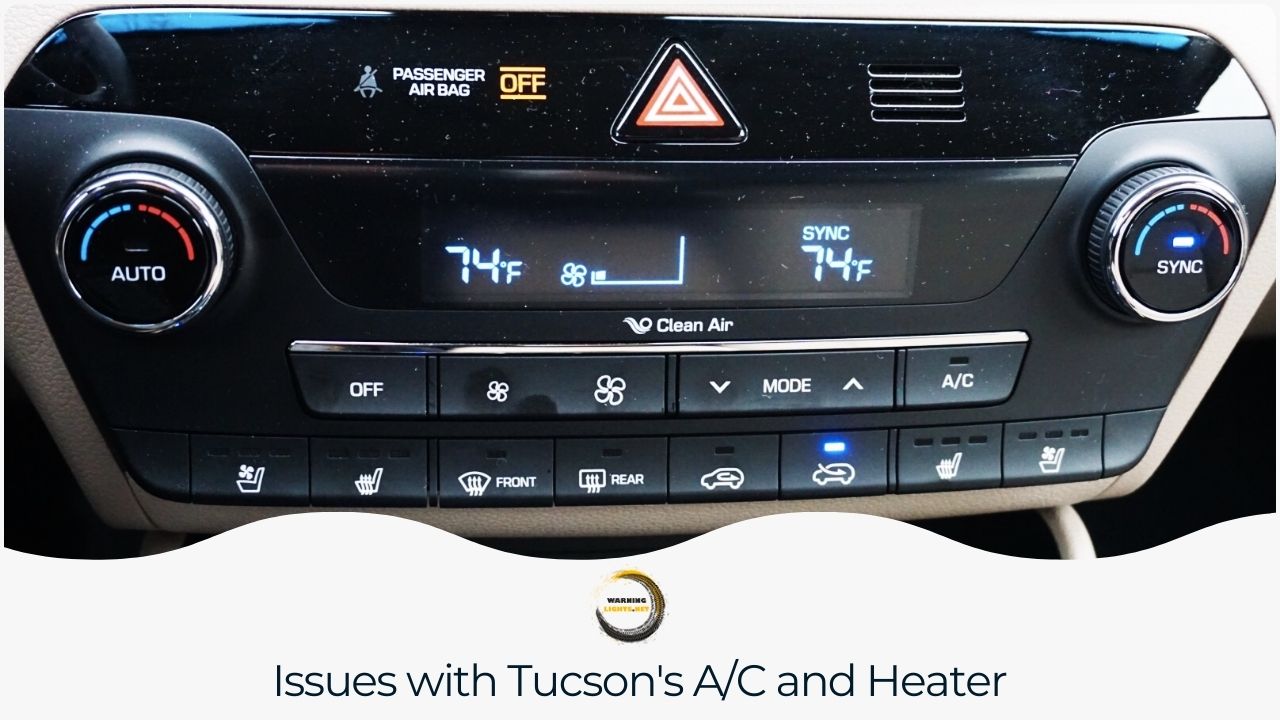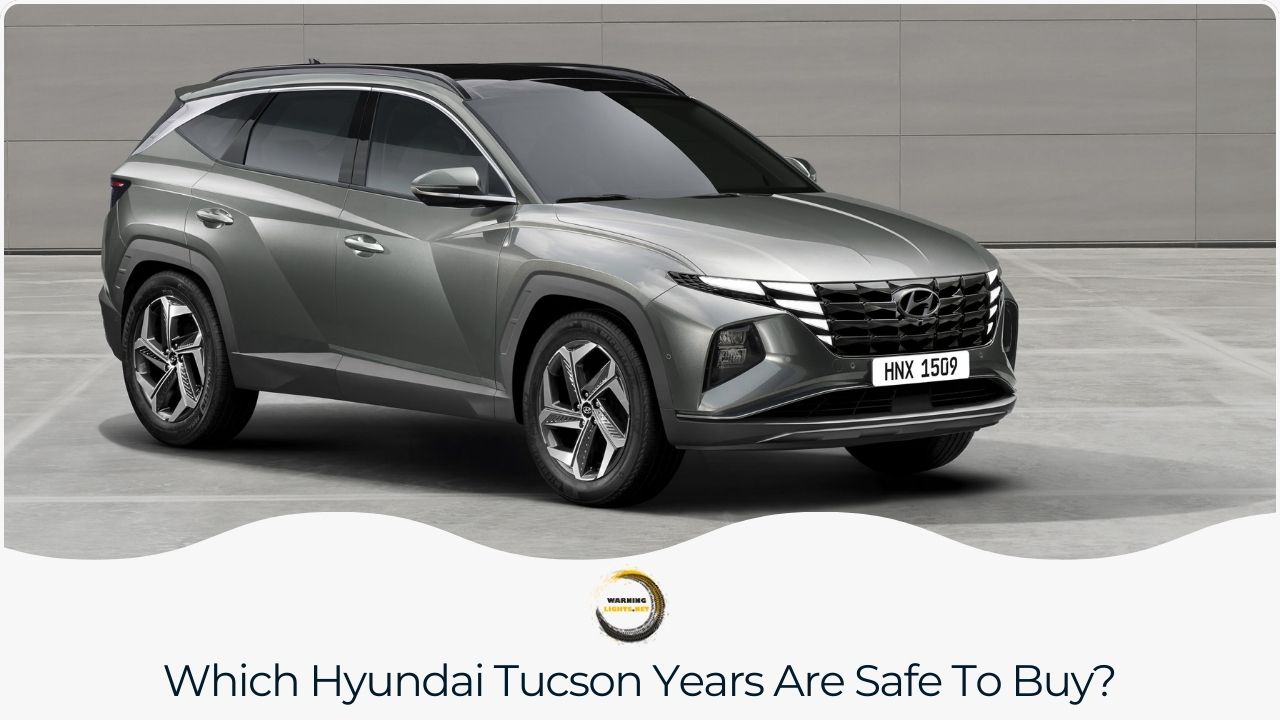In 2004, Hyundai launched the Tucson, a compact crossover SUV, as a 2005 model. It quickly gained popularity as a cost-effective option for consumers.
The Tucson stands out in the affordable crossover market. It offers impressive ground clearance and the option of All-Wheel Drive.
Yet, the quality and reliability of Tucson models have varied over the years.
This article will highlight which Hyundai Tucson years are problematic and which are reliable, helping you make an informed purchase decision.
🎯Suggested article:
Hyundai Tucson Years To Avoid List

The Hyundai Tucson SUV series generally offers excellent drivability and performance, rivaling top-quality SUVs from well-known brands.
However, not all Tucson models have maintained consistent quality standards. Some years have had significant manufacturing errors and structural issues.
The following list identifies Tucson models that have been troublesome, often causing significant problems for owners.
Avoid these models when considering a Tucson:
- 2011 Hyundai Tucson: Issues include poor gas mileage, transmission lock-ups, engine failure, malfunctioning A/C or heater, faulty interior accessories, and drivetrain problems.
- 2012 Hyundai Tucson: There have been problems with the transmission slipping, engine surges or failure, interior accessory issues, brake failure, and electrical system errors.
- 2014 Hyundai Tucson: Difficulties with acceleration, occasional non-responsiveness when stopped, engine failure, broken OEM tire bands, transmission issues, faulty interior accessories, and electrical system problems.
- 2015 Hyundai Tucson: There have been problems with paint peeling, engine stalling or sudden failure while driving, a faulty fuel gauge sensor, transmission issues, and wheel or hub problems.
- 2016 Hyundai Tucson: Engine stalling or shutting off, engine failure, spring breakage during driving, transmission system problems, and body or paint issues.
- 2017 Hyundai Tucson: The vehicle has stalled, made a clunking noise on startup, consumed excessive oil, and had drivetrain and lighting problems.
- 2018 Hyundai Tucson: The vehicle has engine stalling or shutdown issues while driving, premature tire wear or failure, electrical system malfunctions, and A/C or heater problems.
Based on “What Tucson Owners Complain About,” the most problematic years for the Hyundai Tucson crossover SUV are 2011, 2012, 2015, 2016, and 2017.
🚨You may be interested in:
Why Avoid These Hyundai Tucson Years?

According to the Hyundai Tucson Reliability Problems report, the Tucson series has faced several common issues. I will discuss these problems in detail in this section.
Hyundai Tucson Engine Problems

Consumer complaints on several websites noted that many Tucson models have been reported to have engine issues. While many are minor and fixable, they’re common across various Tucson models.
The 2011, 2012, 2014, 2015, 2016, 2017, and 2018 Tucson models are particularly affected, with the highest number of complaints in the 2012, 2014, 2016, and 2017 models.
Owners have reported problems like engine stalling, surging, oil leaks or burns, loss of power, lack of acceleration, white smoke from the tailpipe, the vehicle revving while parked, speed control issues, or total engine failure.
These issues often emerge after around 100,000 miles. A complete engine replacement is needed in severe cases, which is expensive. Therefore, avoiding these models due to potential engine problems is advisable.
Tucson Transmission Issues

Transmission malfunctions are a frequent complaint in some Tucson models.
Reports indicate that the 2011, 2012, 2016, 2017, and 2018 models are most affected, particularly the 2016 and 2017 models.
Common transmission problems include improper engagement, shifting failures, hesitation, overheating, shuddering or slipping during acceleration, and unusual vibrations at high RPMs. Other issues reported are no acceleration from a stop, lurching forward from a stop, the vehicle getting stuck in reverse, or complete transmission failure.
In 2016, Hyundai recalled some Tucson models due to severe acceleration-related transmission issues, which it later addressed with reprogramming.
🎯Suggested article:
Issues with Tucson’s A/C and Heater

A/C and heater malfunctions are also significant issues in certain Tucson models.
The 2011, 2015, 2016, 2017, and 2018 models have minor A/C or heater problems, but the 2016 Tucson has the most reports of A/C malfunctions.
Issues include the A/C intermittently blowing warm air, compressor failure, A/C or heater not functioning properly or stopping entirely, unpleasant odors from vents on startup, the heater cutting out suddenly, and loud knocking noises when the heater is on.
Additional Tucson Issues
In addition to the major issues discussed earlier, several websites have reported some less frequent but notable problems in various Tucson models, including interior accessory defects, electrical system malfunctions, and brake issues.
Users have encountered interior accessory problems like malfunctioning Bluetooth, ignition switch issues, persistent illumination of Hill assist or stability lights, heated seat failures, non-functional reverse assist displays, and peeling steering wheels.
Electrical complaints include power window malfunctions, door lock issues, ignition lock problems, soy-based wire insulation attracting rodents, inaccurate blind spot detection, premature battery death, malfunctioning left turn signals, and radio short circuits.
Additionally, some owners have reported brake-related problems, including brake line leaks, brake failures, and the need for front brake replacements.
Which Hyundai Tucson Years Are Safe To Buy?

Based on the several websites HYUNDAI TUCSON model years comparison, the following Tucson models are considered safe to buy used:
- 2005 – 2010 Hyundai Tucson
- 2013 Hyundai Tucson
- 2019 – 2021 Hyundai Tucson
For those interested in buying a used Hyundai Tucson, selecting from these years can minimize the risk of encountering significant problems.
🚀Recommended article:
Last Words
The Hyundai Tucson can be an excellent choice for those seeking a reliable and affordable compact crossover SUV. However, choosing models with fewer or no reported problems is crucial to ensure a wise investment. The best way to do this is to avoid the problematic Tucson years highlighted in this article.
